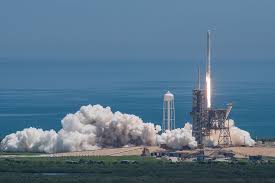
The Starship, SpaceX’s revolutionary spacecraft, continues to evolve through rigorous testing, taking a giant leap towards its eventual goal of making space travel more accessible. The fifth flight test marks a significant milestone in the Starship program. Here, we explore the details of this test, its objectives, and the future of the Starship project.
Overview of Starship
Starship is a fully reusable spacecraft developed by SpaceX, designed to carry both crew and cargo to a variety of destinations, including the Moon, Mars, and beyond. With a goal of enabling multi-planetary exploration, the spacecraft’s development has seen numerous test flights and significant engineering advancements. The Starship system consists of two stages: the Super Heavy booster, which propels the spacecraft into orbit, and the Starship itself, which will operate in deep space and during planetary landings.
Purpose of the Fifth Flight Test
The primary purpose of the fifth flight test was to validate the design and functionality of key components, including the new heat shield, engine performance, and reentry capabilities. SpaceX aims to gather valuable data to refine the spacecraft’s systems and improve its safety and efficiency for future crewed missions.
Key Objectives
Heat Shield Performance: The test focused on the newly enhanced heat shield, designed to withstand the intense temperatures during atmospheric reentry.
Raptor Engine Testing: Engineers tested the performance of multiple Raptor engines, which are the spacecraft’s main propulsion units, during various stages of the flight.
Reentry and Landing: One of the main objectives was to assess the spacecraft’s reentry trajectory and precision landing capabilities, crucial for safe landings on Earth and other celestial bodies.
Details of the Fifth Flight Test
Launch and Ascent
The Starship was launched from SpaceX’s testing facility in Boca Chica, Texas, powered by multiple Raptor engines that propelled the spacecraft into the upper atmosphere. The ascent phase was smooth, demonstrating the successful integration of the engines and the spacecraft’s aerodynamic control systems.
Mid-Flight Maneuvers
During the flight, Starship performed several key maneuvers, including a “belly flop” descent, where the spacecraft reorients itself horizontally for atmospheric reentry. This maneuver was critical for testing the spacecraft’s aerodynamic surfaces and heat shield, designed to manage the intense heat generated during reentry.
Reentry and Landing
After reaching its maximum altitude, Starship began its descent back to Earth. The reentry phase was particularly important for evaluating the performance of the heat shield and the effectiveness of the control surfaces. Starship successfully executed a controlled reentry and made a soft landing near the launch site, though some refinements are still needed for full precision landing.
Improvements and Challenges
Heat Shield Enhancements
One of the notable improvements in this test was the upgraded heat shield, which features more durable materials to better withstand the harsh conditions of atmospheric reentry. Preliminary data suggests that the heat shield performed as expected, though engineers will continue to analyze the results to make further refinements.
Engine Performance
The Raptor engines, which are central to Starship’s propulsion, showed improved performance and reliability during this flight. However, engineers are still working on optimizing the engines for long-duration spaceflights and more efficient reusability.
Landing Precision
While the spacecraft successfully landed, SpaceX continues to fine-tune the landing procedures to ensure higher accuracy, which is essential for future missions to the Moon, Mars, and beyond. The goal is to achieve pinpoint landings to minimize risks and optimize the recovery and reuse of the spacecraft.
Implications for Future Space Exploration
The fifth flight test represents a significant step forward for SpaceX and the broader space exploration community. As Starship moves closer to operational status, its potential applications extend beyond crewed spaceflights to include cargo missions, satellite deployment, and even interplanetary colonization.
Crewed Missions to the Moon and Mars
One of the ultimate goals of the Starship program is to facilitate crewed missions to the Moon and Mars. NASA has already selected Starship as part of its Artemis program, which aims to return humans to the Moon by the mid-2020s. Success in these flight tests brings Starship closer to being the spacecraft that carries humans to Mars, fulfilling SpaceX’s long-term vision of multi-planetary habitation.
Commercial Space Travel
Starship’s reusability is expected to dramatically lower the cost of space travel, opening the door for commercial space tourism and research missions. As more flight tests are conducted, SpaceX will gather the data needed to make space travel more accessible to private individuals and organizations.
Cargo and Satellite Deployment
In addition to crewed missions, Starship has the potential to revolutionize satellite deployment and cargo transport. Its large payload capacity and reusability make it an ideal candidate for launching multiple satellites in a single mission, as well as transporting cargo to distant destinations in space.
The fifth flight test of Starship is a crucial milestone in the ongoing development of this groundbreaking spacecraft. With each test, SpaceX moves closer to realizing its ambitious goals of making space travel more affordable, reliable, and widespread. As Starship continues to evolve, it promises to play a pivotal role in the future of space exploration, from missions to the Moon and Mars to commercial space ventures. The lessons learned from this flight will inform the next steps, paving the way for a new era of space exploration.
Subscribe to Follow Global Trends for daily global news.
Find Out How To Make Money As A Full Time Writer/Blogger Guide.
To Advertise, Advertise Your Affiliate Links on FollowGlobalTrends.com for Just $1 Per Link Per Month!
Related Articles
Written By: Enyoghasi Ngozi pricillia

